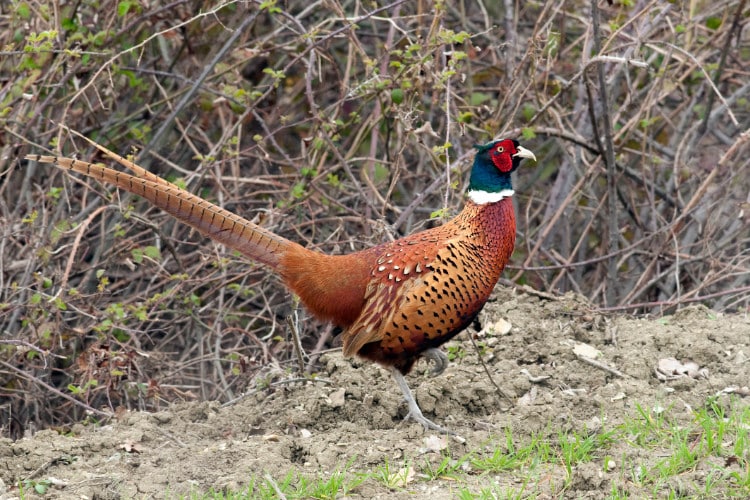
Pheasant - Forst Eibenstein
The pheasant is a magnificent bird known for its striking coloration and elegant appearance. Originally native to parts of Asia, the pheasant was introduced to many parts of the world for its beauty and hunting value and is now common in many countries.
The most distinctive feature of the pheasant is its magnificent plumage. Males have bright variegated coloration with combinations of green, blue, gold, red and brown feathers. Females, on the other hand, are more inconspicuous with camouflaged plumage that helps them hide in their natural environment. This sexual dimorphism serves to make the male more attractive in courtship and in the fight for females.
Pheasants are ground birds and live in a variety of habitats, including forests, grasslands, and agricultural areas. They are good runners and can fly short distances, although they are more ground oriented. Their flight is usually fast and straight, with conspicuous wing beats and a characteristic call.
Pheasants are omnivorous and feed on a variety of foods, including seeds, berries, insects, worms, and small vertebrates. They are adept at finding their food on the ground using sharp eyes and good motion detection.
During the reproductive cycle, pheasants perform a spectacular courtship display. Males strut with tails raised and wings spread wide as they call loudly, showing off their striking plumage. This behavior serves to attract females and signal their readiness to mate. After mating, females lay a number of eggs in a nest on the ground, which they incubate alone.
Pheasants are known not only for their beauty, but also for their popularity in hunting. Their fast flight and excellent hiding game make them popular prey for hunters. In some countries, special breeding programs for pheasants have been established to maintain the population for hunting purposes.
It is important to note that the pheasant also plays a role in the ecosystem. As omnivores, they help control insect populations and contribute to seed dispersal. However, in some cases, pheasants can also be considered invasive species when they are introduced into foreign ecosystems and affect native flora and fauna.
The pheasant is undoubtedly an impressive bird, recognized both for its beauty and for its importance in hunting history.
ichte is appreciated. Its striking plumage and distinctive behavior make it a fascinating sight in the wild. By protecting this unique bird species and preserving its habitats, we can ensure that the pheasant will continue to inspire our admiration and fascination in the future.
